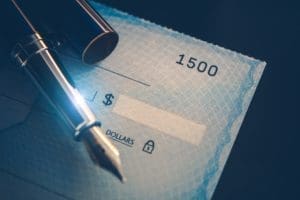 It’s easy to write checks off as passé, but according to Next Gen Personal Finance, the average American still writes 38 checks a year. Next time you pull out your checkbook, consider the extraordinary staying power of checking technology, which has remained largely the same since its September 1955 introduction by Bank of America.
It’s easy to write checks off as passé, but according to Next Gen Personal Finance, the average American still writes 38 checks a year. Next time you pull out your checkbook, consider the extraordinary staying power of checking technology, which has remained largely the same since its September 1955 introduction by Bank of America.
In the early 1950s, as Americans continued to increase the number of checks they wrote, BOA faced a problem. It took a gigantic workforce to process more than a billion checks per year. In fact, experienced bookkeepers were only able to post about 245 checks in an hour. BOA had to close its banks by 2 p.m. each day to manually proof and process the day’s checks.
Automation was sorely needed
Enter the Stanford Research Institute, which immediately recommended the use of account numbers instead of alphabetized accounts. Account numbers made it possible to streamline bookkeeping and proofing into one computerized process.
Over four years, BOA and the institute developed the Electronic Recording Method of Accounting. Known as ERMA, the machine was introduced at a press conference by none other than future president, Ronald Reagan. BOA announced it had reduced check processing time by 80 percent. In the hour it took a bookkeeper to post 245 checks, ERMA posted 33,000 — plus, ERMA flagged overdrafts, printed statements, and more.
BOA and the Stanford Research Institute also worked with General Electric to develop magnetic-ink character recognition (MICR), the ink still used today to print your routing and account number on the bottom of your checks. MICR enabled ERMA to read checks and deposit slips. BOA freely shared MICR with all banks and printers. In 1956, the American Banking Association adopted MICR — and the easy-read font in which these numbers are printed — as the banking industry standard.
Photo: welcomia / Shutterstock
